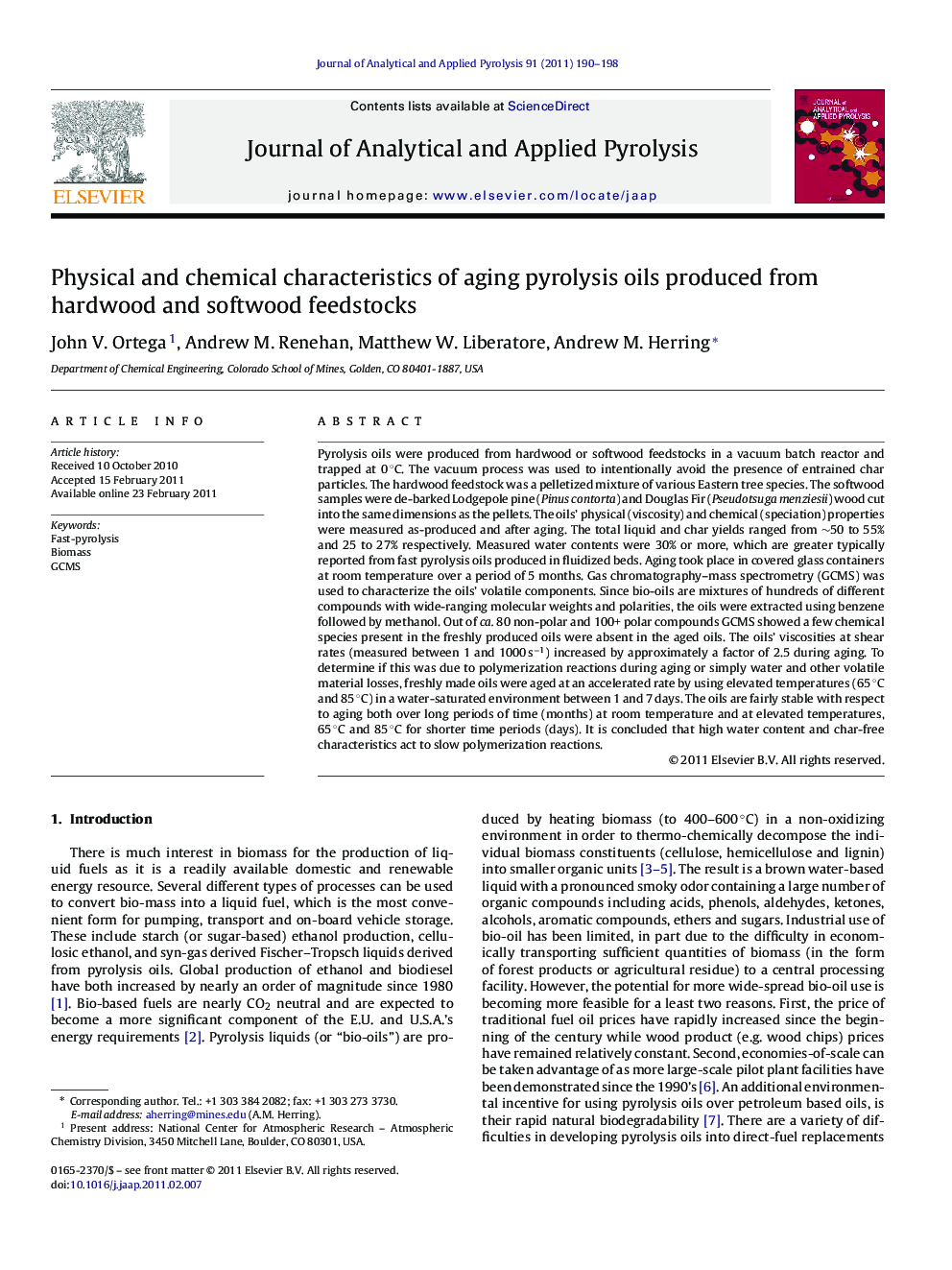| کد مقاله | کد نشریه | سال انتشار | مقاله انگلیسی | نسخه تمام متن |
|---|---|---|---|---|
| 1198009 | 964672 | 2011 | 9 صفحه PDF | دانلود رایگان |

Pyrolysis oils were produced from hardwood or softwood feedstocks in a vacuum batch reactor and trapped at 0 °C. The vacuum process was used to intentionally avoid the presence of entrained char particles. The hardwood feedstock was a pelletized mixture of various Eastern tree species. The softwood samples were de-barked Lodgepole pine (Pinus contorta) and Douglas Fir (Pseudotsuga menziesii) wood cut into the same dimensions as the pellets. The oils’ physical (viscosity) and chemical (speciation) properties were measured as-produced and after aging. The total liquid and char yields ranged from ∼50 to 55% and 25 to 27% respectively. Measured water contents were 30% or more, which are greater typically reported from fast pyrolysis oils produced in fluidized beds. Aging took place in covered glass containers at room temperature over a period of 5 months. Gas chromatography–mass spectrometry (GCMS) was used to characterize the oils’ volatile components. Since bio-oils are mixtures of hundreds of different compounds with wide-ranging molecular weights and polarities, the oils were extracted using benzene followed by methanol. Out of ca. 80 non-polar and 100+ polar compounds GCMS showed a few chemical species present in the freshly produced oils were absent in the aged oils. The oils’ viscosities at shear rates (measured between 1 and 1000 s−1) increased by approximately a factor of 2.5 during aging. To determine if this was due to polymerization reactions during aging or simply water and other volatile material losses, freshly made oils were aged at an accelerated rate by using elevated temperatures (65 °C and 85 °C) in a water-saturated environment between 1 and 7 days. The oils are fairly stable with respect to aging both over long periods of time (months) at room temperature and at elevated temperatures, 65 °C and 85 °C for shorter time periods (days). It is concluded that high water content and char-free characteristics act to slow polymerization reactions.
Journal: Journal of Analytical and Applied Pyrolysis - Volume 91, Issue 1, May 2011, Pages 190–198